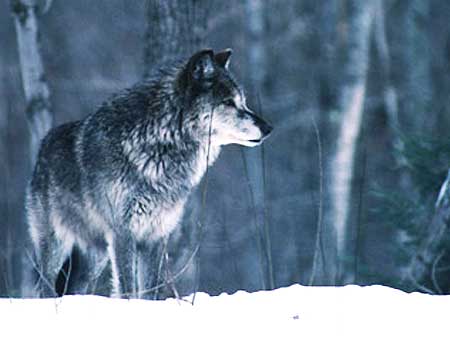Fish and Wildlife Service Announces Gray Wolves in the Western Great Lakes Have Recovered

Washington, DC –-(Ammoland.com)- The U.S. Fish and Wildlife Service (Service) today announced a proposal to remove gray wolves in the Western Great Lakes area – which includes Minnesota, Michigan and Wisconsin – from the Federal List of Endangered and Threatened Wildlife because wolves have recovered in this area and no longer require the protection of the Endangered Species Act (ESA).
Wolves in the Western Great Lakes area have exceeded recovery goals and continue to thrive.
Wolf numbers total more than 4,000 animals in the three core recovery states. Minnesota’s population is estimated at 2,922 wolves; there are an estimated 557 wolves in Michigan’s Upper Peninsula and another 690 in Wisconsin. Each state has developed a plan to manage wolves once federal protection is no longer needed.
“Wolves in the Western Great Lakes have achieved recovery,” said Fish and Wildlife Service Acting Director Rowan Gould. “We are taking this step because wolf populations have met recovery goals and no longer need the protection of the Endangered Species Act. We are asking the public to review this proposal and provide us with any additional information that can help inform our final decision.”
The proposal identifies the Western Great Lakes Distinct Population Segment (DPS) of wolves, which includes a core area of Minnesota, Michigan, and Wisconsin, as well as parts of adjacent states that are within the range of wolves dispersing from the core recovery area. After reviewing the latest available scientific and taxonomic information, the Service now recognizes the presence of two species of wolves in the Western Great Lakes: the gray wolf (Canis lupus), the wolf species currently listed under the ESA, and the eastern wolf (Canis lycaon), with a historical range that includes portions of eastern Canada and the northeastern United States. Recent wolf genetic studies indicate that what was formerly thought to be a subspecies of gray wolf (Canis lupus lycaon) is actually a distinct species (Canis lycaon). To establish the status of this newly recognized species, the Service is initiating a review of C. lycaon throughout its range in the United States and Canada.
The Service is seeking information from governmental agencies, Native American tribes, scientific community, industry and any other interested parties on threats, population size and trends, and other data that could affect the long-term survival of the Western Great Lakes DPS of the gray wolf. The Service is also seeking information on the status of the eastern wolf (Canis lycaon) throughout its range in the United States and Canada.
Written comments may be submitted by one of the following methods:
Federal eRulemaking Portal: www.regulations.gov. Follow the instructions for submitting comments to Docket No. [FWS-R3-ES-2011-0029]. U.S. mail or hand-delivery: Public Comments Processing, Attn: Docket No. [FWS-R3-ES-2011-0029]; Division of Policy and Directives Management; U.S. Fish and Wildlife Service; 4401 N. Fairfax Drive, MS 2042-PDM; Arlington, VA 22203.
The proposed rule was delivered to the Federal Register today and is expected to publish within the next two weeks. Comments must be received within 60 days from publication in the Federal Register. The Service will post all comments on www.regulations.gov. This generally means the agency will post any personal information provided through the process. The Service is not able to accept email or faxes.
Following the close of the comment period, the Service will consider all new information and other data and make a final decision on the proposal to delist the Western Great Lakes DPS of wolves. In the meantime, gray wolves in the Western Great Lakes area will remain classified as endangered, except in Minnesota where they will remain threatened.
More information on the recovery of gray wolves in the Western Great Lakes can be found at www.fws.gov/midwest/wolf/.
The ESA provides a critical safety net for America’s native fish, wildlife and plants. We are working to actively engage conservation partners and the public in the search for improved and innovative ways to conserve and recover imperiled species. To learn more about the Endangered Species Program, visit www.fws.gov/endangered/.
About:
The mission of the U.S. Fish and Wildlife Service is working with others to conserve, protect and enhance fish, wildlife, plants and their habitats for the continuing benefit of the American people. We are both a leader and trusted partner in fish and wildlife conservation, known for our scientific excellence, stewardship of lands and natural resources, dedicated professionals and commitment to public service. For more information on our work and the people who make it happen, visit www.fws.gov.
